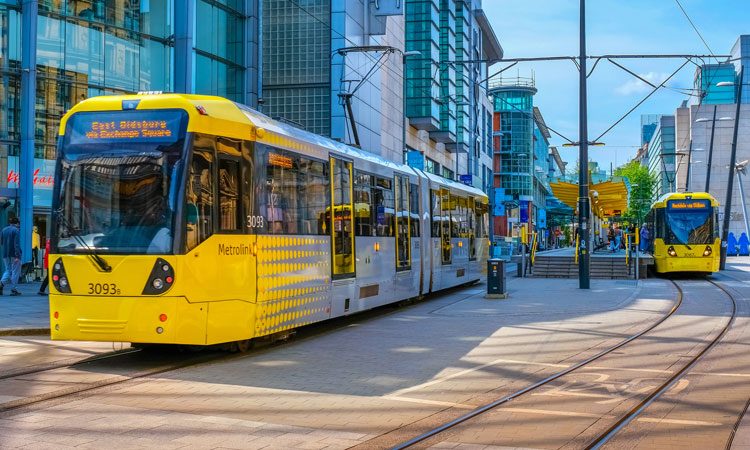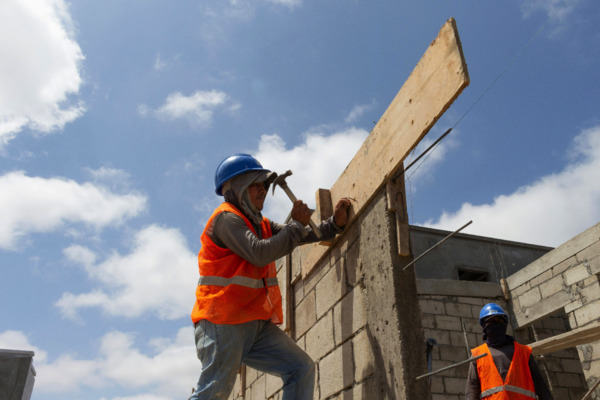The Manchester Metrolink is a light rail system in Greater Manchester, England. It’s one of the most extensive tram systems in the United Kingdom, serving the city of Manchester and its surrounding areas. The Metrolink network covers over 100 kilometers of track, with multiple lines connecting various parts of the city and nearby towns.
It’s a popular mode of transportation for commuters and tourists alike, offering convenient access to key locations such as Manchester city center, Old Trafford (home of Manchester United Football Club), and the Trafford Centre shopping complex.
How did the Manchester Metrolink evolve over time?
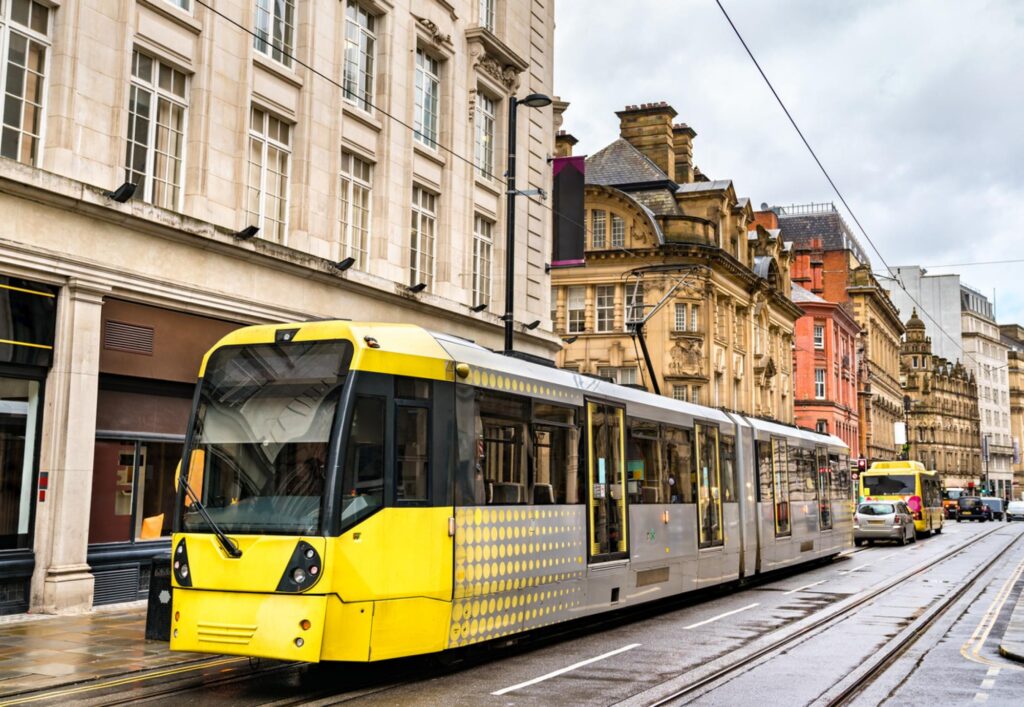
In the old days, Manchester had lots of trams, like many other cities in the UK. But as cars and buses became more popular, fewer people used trams. Eventually, the last tram ran in 1949.
In the 1980s, people started thinking about bringing back light rail systems to help with traffic and make public transport better. Manchester decided to build a new light rail system called the Metrolink, and they started working on it.
The first part of the Metrolink opened in 1992. It went from Bury to Altrincham through Manchester city center. People liked it, and it showed that light rail could work in Manchester.
After that, they kept adding more lines to the Metrolink. They built new routes to places like Eccles, Oldham, Rochdale, Ashton-under-Lyne, and even Manchester Airport. This made it easier for more people to travel around Greater Manchester.
As time went on, they made the Metrolink better. They got new trams, improved the tracks, and made it easier to buy tickets.
Nowadays, they’re still making the Metrolink even bigger. They want to add more lines to places like Trafford Park and the Trafford Centre. And they’re always working to keep the existing lines in good shape.
What is the layout of the Manchester Metrolink network?
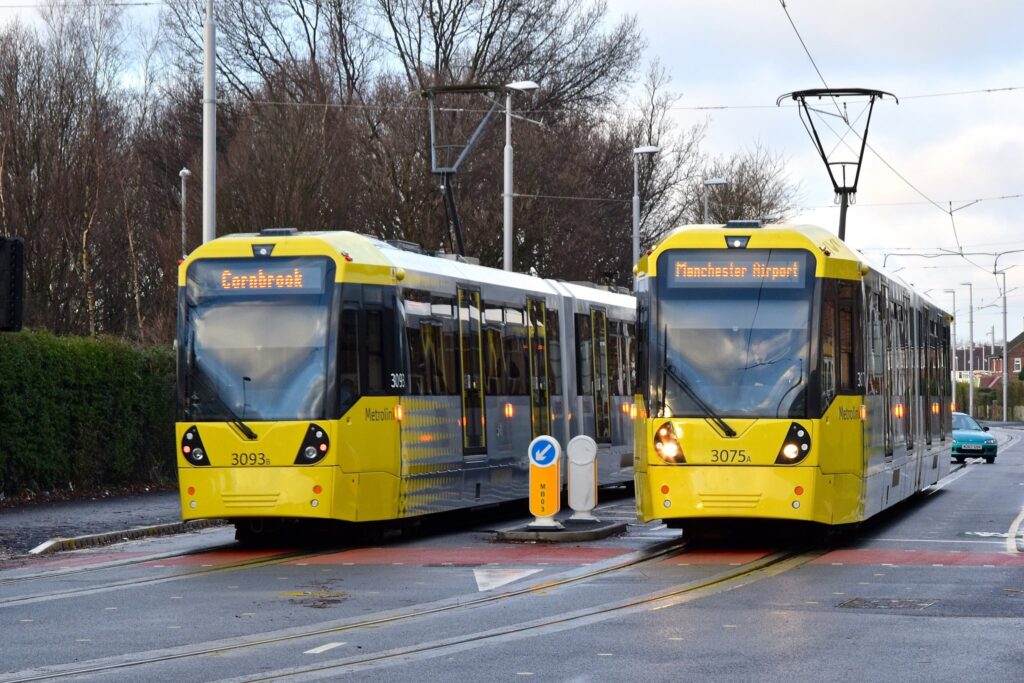
The Manchester Metrolink is like a big train system that connects different parts of Greater Manchester. Here’s what it looks like:
- Altrincham Line: Goes from Altrincham to Bury, passing through places like Sale and Trafford Bar.
- Ashton-under-Lyne Line: Starts in Ashton-under-Lyne, goes through Manchester, and ends in Eccles.
- Bury Line: Starts in Bury, goes to Manchester, then splits into two lines—one goes to Altrincham, and the other goes to Eccles.
- East Didsbury Line: Goes from East Didsbury to Rochdale, passing through Deansgate-Castlefield.
- Eccles Line: Goes from Eccles to Ashton-under-Lyne, passing through places like MediaCityUK.
- Manchester Airport Line: Connects Manchester city center to the airport, passing through places like Sale Water Park.
- MediaCityUK Line: Branches off from the Eccles Line and goes straight to MediaCityUK.
- Oldham and Rochdale Line: Goes from Rochdale to Manchester, passing through places like Shaw and Crompton.
- Trafford Park Line (not ready yet): It will go from Pomona to the Trafford Centre, connecting places like Trafford Park.
How does the Manchester Metrolink operate and what services does it offer?
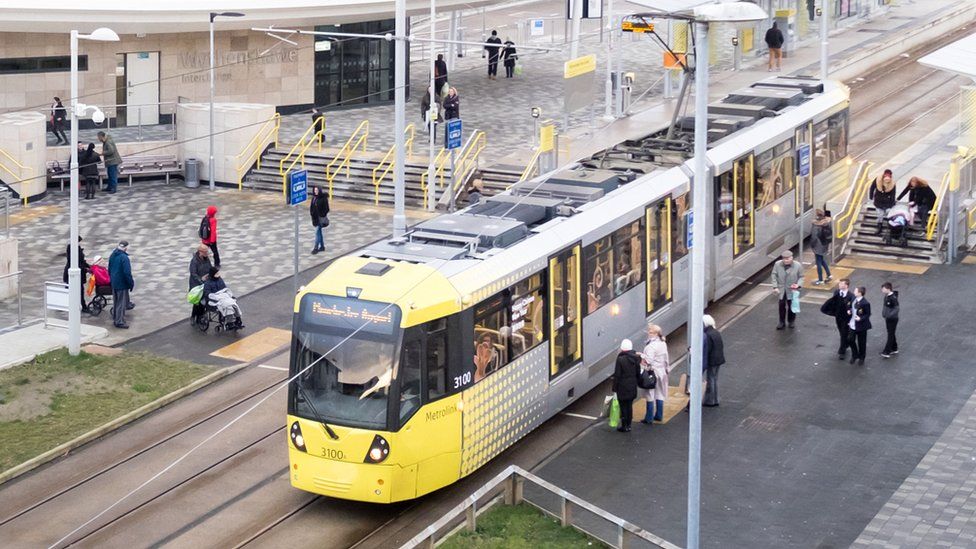
The Manchester Metrolink is a tram system serving Greater Manchester, UK. It operates with an extensive network of tramlines connecting various parts of the city and surrounding areas. Here’s how it operates and the services it offers:
Tram Services
The Metrolink network consists of several lines, each serving specific areas within Greater Manchester. These lines are designed to provide comprehensive coverage, connecting suburbs, city centers, and key destinations.
Trams run along dedicated tracks, often sharing road space with other vehicles but sometimes operating on segregated tramways to ensure efficient and reliable service.
Frequent Service
During peak hours, typically in the mornings and evenings on weekdays, Metrolink offers high-frequency service with trams running every few minutes. This frequent service helps accommodate the heavy passenger flow during rush hours.
Off-peak and weekend services maintain a reduced frequency but still aim to provide regular and reliable tram service throughout the day.
Integrated Transport Network
Metrolink plays a pivotal role in Greater Manchester’s integrated public transportation network. Tram stops are strategically located near bus stations, train stations, and other transport hubs to facilitate seamless transfers between different modes of transit.
Interchange stations, such as Piccadilly Gardens and Shudehill, serve as major hubs where passengers can easily switch between trams, buses, and trains.
Accessibility
Metrolink is committed to ensuring accessibility for all passengers. Trams are designed with low floors to allow easy boarding for wheelchair users, passengers with strollers, and those with mobility impairments.
Stations are equipped with features such as ramps, elevators, tactile paving, and audible announcements to assist passengers with disabilities and make the entire system more inclusive.
Ticketing Options
Passengers have various ticketing options to choose from when using Metrolink. These include single-trip tickets, day passes, and longer-term travelcards such as weekly or monthly passes.
Tickets can be purchased at ticket machines located at tram stops, through the official Metrolink website, or via the mobile app.
Contactless payment methods, including contactless cards and mobile wallets, are accepted for added convenience.
Real-Time Information
Metrolink provides real-time information to passengers to help them plan their journeys effectively. Digital displays at tram stops show arrival times for upcoming trams, while the mobile app offers live updates on service status and disruptions.
Passengers can also sign up for alerts and notifications to stay informed about any changes or delays affecting their route.
Special Services
During major events, holidays, or periods of increased demand, Metrolink may introduce special services to accommodate higher passenger volumes.
This could involve extending operating hours, adding extra trams on popular routes, or providing shuttle services to event venues.
Additionally, Metrolink works closely with event organizers, local authorities, and transportation partners to ensure smooth coordination and efficient transportation for large-scale gatherings.
What is the impact of the Manchester Metrolink on Greater Manchester?
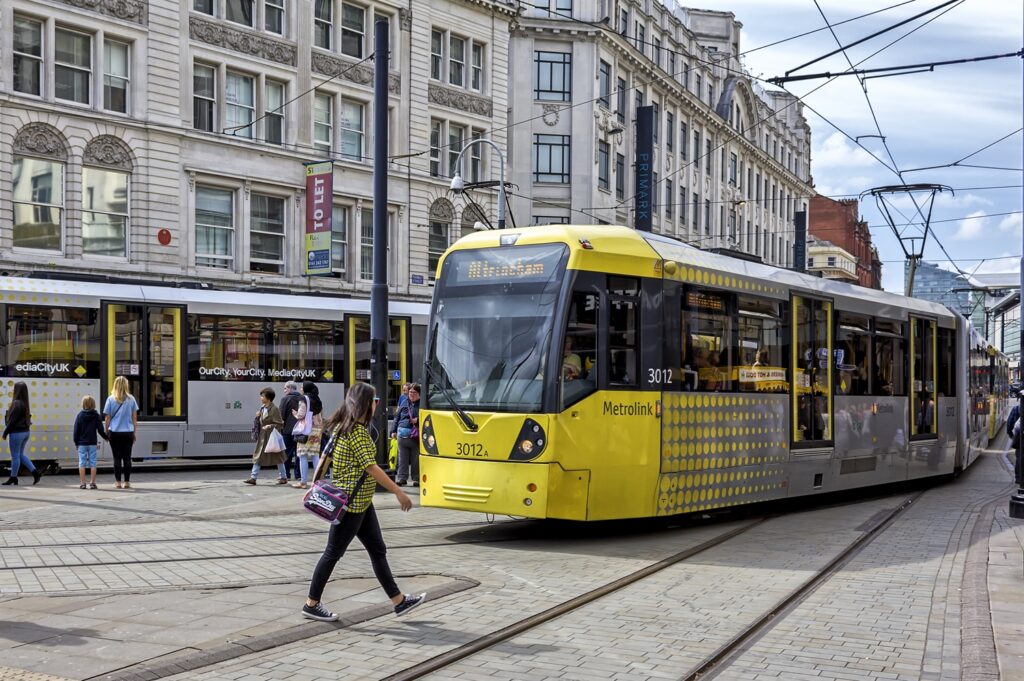
The Manchester Metrolink has had a significant impact on Greater Manchester since its inception. It has improved transportation by providing a reliable and efficient option for residents, reducing reliance on cars and alleviating traffic congestion.
Additionally, the Metrolink has enhanced accessibility across the region, connecting suburbs with the city center and improving access to employment, education, and leisure opportunities. Its presence has also spurred economic development along its routes, with businesses and commercial centers benefiting from increased foot traffic and improved connectivity.
Moreover, Metrolink has made it easier for tourists to explore Greater Manchester, connecting key attractions and landmarks. Environmentally, it contributes to sustainability goals by offering a greener alternative to driving, thereby reducing carbon emissions.
Socially, it promotes inclusion by providing accessible and affordable transportation options for people of all ages and abilities. Overall, the Manchester Metrolink has become a vital component of the region’s transportation infrastructure, contributing to its growth, connectivity, and livability.
Final Words
The Manchester Metrolink is a vital part of Greater Manchester’s transportation system. It has grown from its beginnings to become a widespread network, connecting various parts of the city and nearby areas. With its frequent services, accessible stations, and affordable fares, the Metrolink plays a significant role in the daily lives of residents and visitors alike.
Beyond its practical benefits, the Metrolink contributes to the local economy, helps reduce traffic congestion, and promotes environmental sustainability. Looking ahead, continued investment and development in the Metrolink will be crucial for ensuring efficient and accessible public transportation for the people of Greater Manchester.

